Presented in partnership with the Croatian National Tourism Board
Fresh, seasonal and local, Croatia’s cuisine is regionally diverse, and big on flavour. Take a trip around the country through its food and drink, from local produce and ingredients to must-try dishes and wines
Croatian cuisine is a mosaic of flavours and influences, a meeting point of the Mediterranean and Central Europe, while at the same time remaining distinctive and unique. From the grandeur of its forests and mountains to the fertile plains of Slavonia and the glittering islands of the Adriatic, a journey through the landscapes, culture and fantastically rich heritage of Croatia is also a journey through its gastronomy. “Croatian cuisine is incredibly diverse, with each region offering its own specialities,” says Dino Šeparović, owner and executive chef of Konoba Kala. “From the truffle-laden dishes of Istria to the hearty stews of Slavonia, Croatia’s culinary map is as varied as its landscapes.”
The essence of Croatia’s cuisine is the wealth and quality of its fresh, local ingredients, many of which are seasonal – seafood from the Adriatic, exquisite truffles from Istria, oysters from Ston, game from Gorski Kotar, potatoes from Lika, wild garlic and wild asparagus, outstanding olive oils and some really great wine – the list goes on and on. “Seasonal ingredients are very important because they are better quality, and are mostly produced by the local community, in which case you are supporting all aspects of the economy,” says Marko Gajski, executive chef at LD Restaurant. “Respecting the seasons means respecting and supporting sustainability. There is no better ingredient than a seasonal one – our job as a chef is just not to destroy them.”
Southern Dalmatia – Dubrovnik and the islands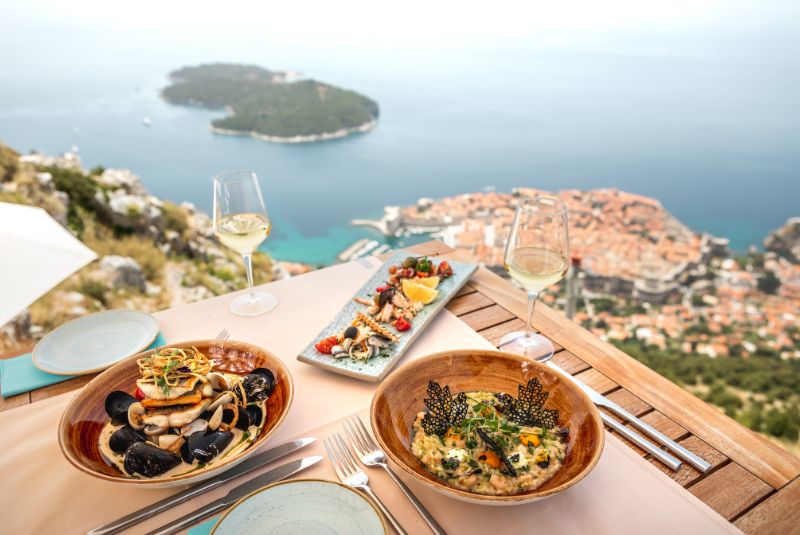
(Image: Maja Danica Pečanić, courtesy of Croatian National Tourism Board)
Nowhere else has become more emblematic of Dalmatia, and of Croatia as a whole, than Dubrovnik, with its spectacularly well-preserved medieval walls enclosing a warren of streets, churches and squares. The nearby Pelješac peninsula is famous for its fantastically rich red wines from the Plavac Mali grape, in particular the Dingač region, while on the island of Korčula, Grk is a deliciously crisp white. “Our island is still connected with its heritage and history,” says Marko Gajski, whose Michelin-starred LD Restaurant overlooks the sea from the beautifully preserved medieval town of Korčula. The pressures of mass tourism can lead to restaurants replacing their signature dishes and ingredients with more commercial and more familiar dishes. But, he says, “Korčula is still resisting this and 90% of the people working in our industry are still from the island. We’re putting a lot of effort into presenting and supporting local products, and focusing on developing young chefs, and giving them the opportunity to work and progress to make a future for their own.”
Where to eat: LD Restaurant, Restaurant 360
Where to stay: Lešić Dimitri Palace, Hotel Dubrovnik Palace
Central Dalmatia – Split and the islands
(Image: Zoran Jelača, courtesy of Croatian National Tourism Board)
At the centre of the Dalmatian coast lies Split, its Unesco-listed Diocletian’s Palace fused into the beating heart of the city. With its bustling markets and vibrant waterfront cafés, Split is also the gateway to islands such as Brač and Vis, which occupy their own distinctive place in Croatian gastronomy. “One of the defining characteristics of Brač’s cuisine is the abundance of local ingredients,” says Dino Šeparović, whose restaurant Konoba Kala is on the island of Brač. “The island’s unique microclimate and fertile soil allow for the cultivation of exceptional produce. The olive oil from Brač, for instance, is renowned for its quality and distinctive flavour, and forms the backbone of many traditional dishes, imparting a characteristic taste that is quintessentially Brač. The island’s lamb is another cornerstone of our culinary tradition – raised on the aromatic herbs of the island’s pastures, it has a unique flavour profile that is celebrated across Croatia. At Konoba Kala, we prepare this dish on an open fire, enhancing its natural flavours and infusing it with a subtle smokiness. We serve it with skuta, a fresh cheese from the island, which adds a creamy and slightly tangy counterpoint to the rich meat.”
Where to eat: Konoba Kala, ZOI
Where to stay: Judita Palace
Central Dalmatia – Šibenik 
(Image: Ivo Biočina, courtesy of Croatian National Tourism Board)
If Split is the gateway to the islands of Central Dalmatia, Šibenik is the gateway to the extraordinary River Krka which reaches deep into the Dalmatian hinterland, and the jewel-like islands of the Kornati archipelago. Rudolf Štefan, owner and chef at Michelin-starred Pelegrini which overlooks the Unesco-listed Cathedral of St James in Šibenik, sums up the area’s culinary riches well. “Šibenik and its surroundings are special for their wealth of specific ingredients in such a small geographical area. This is due to the influence of the northern wind, called the bura, along with the Adriatic Sea and the River Krka. Pelegrini’s menu offers a walk through Šibenik and its surrounding area. We try to showcase the best of the region. We use cuttlefish from the neighbouring island of Zlarin, prawns from the brackish waters of Lake Prokljan, and duck from the area of the River Krka and the hinterland. This year we also put an emphasis on local trees – almond, fig, mulberry, nettle, fig and pine.”
Where to eat: Pelegrini, Konoba Boba
Where to stay: Armerun Heritage Hotel & Residences, D-Resort Šibenik
Northern Dalmatia – Zadar and the islands 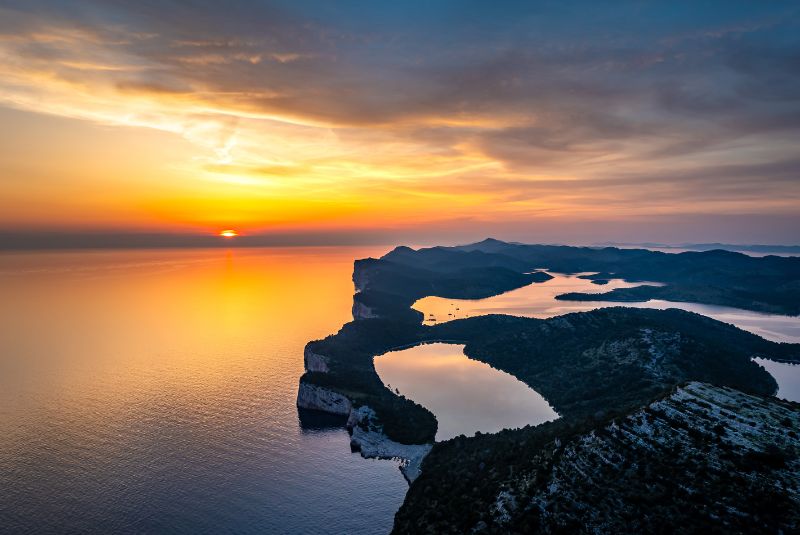
(Image: Julien Duval, courtesy of Croatian National Tourism Board)
Backed by the Velebit mountains, its waterfront is the place to take in some of the most breathtaking sunsets imaginable, but Zadar is also the setting off point for the islands of northern Dalmatia, including Dugi otok and Pag. The latter is joined to the mainland by a road bridge, leading to extensive salt pans and a landscape which looks like it might have been borrowed from the surface of the moon. Croatia’s best-known cheese, Paški sir, comes from the island of Pag – a hard, sheep’s milk cheese with a grainy texture and wonderfully piquant, salty flavour, and PDO status. Along with local lamb, fish and olive oil, Paški sir is a cornerstone of the island’s cuisine, as exemplified by dishes at Boškinac, located in Novalja. Boris Šuljić, head chef at the restaurant, defines his philosophy in the kitchen as “simplicity that respects the perfection of the ingredients themselves, and the reinterpretation of tradition.”
Where to eat: Boškinac, Foša
Where to stay: Boškinac, Falkensteiner Hotel and Spa Iadera
City of Zagreb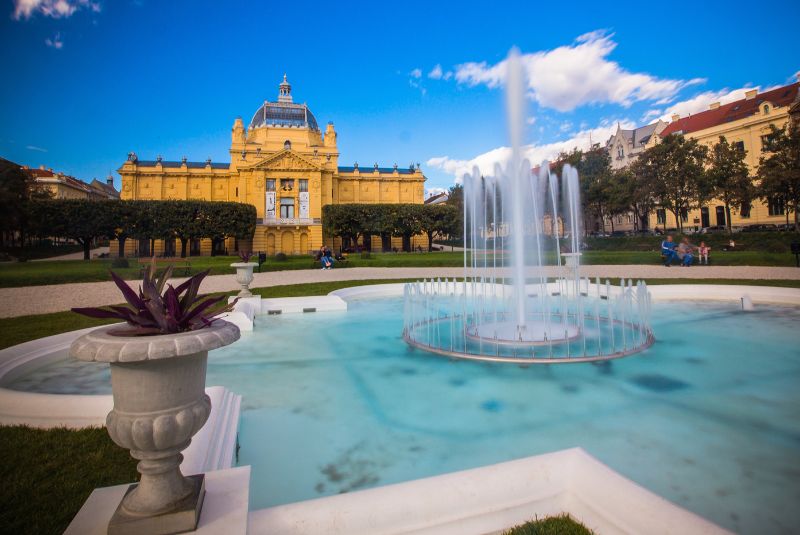
(Image: Ivo Biočina, courtesy of Croatian National Tourism Board)
Though it often passes under the radar, the Croatian capital has some of the best cuisine the country has to offer, and is surrounded by fabulously rich and diverse local produce. Mario Mandarić, chef at fine dining restaurant Noel, points to many local ingredients and dishes typical of Zagreb and the surrounding region – mlinci, faširanci, štrukli and so on. “I would like to highlight the trout. The trout from here is amazing – we even have it as a signature dish in Noel, made with vin jaune and elderflower syrup.” He also highlights another aspect which sets restaurants in Zagreb apart from those on the coast – namely that they’re open all year, whereas on the coast many are only open for the summer season. “This allows us in Zagreb to take advantage of seasonal ingredients throughout the entire year. For instance, at my restaurant, Noel, we completely change the menus four times a year to reflect the seasons and make smaller adjustments to align with micro-seasons. Our menus are 100% zero waste, and all the supplies come from small local farms that we personally met, and like the way they work.”
Where to eat: Noel, Dubravkin put, Beštija
Where to stay: DoubleTree by Hilton Zagreb, Esplanade, Hotel Jägerhorn
Istria 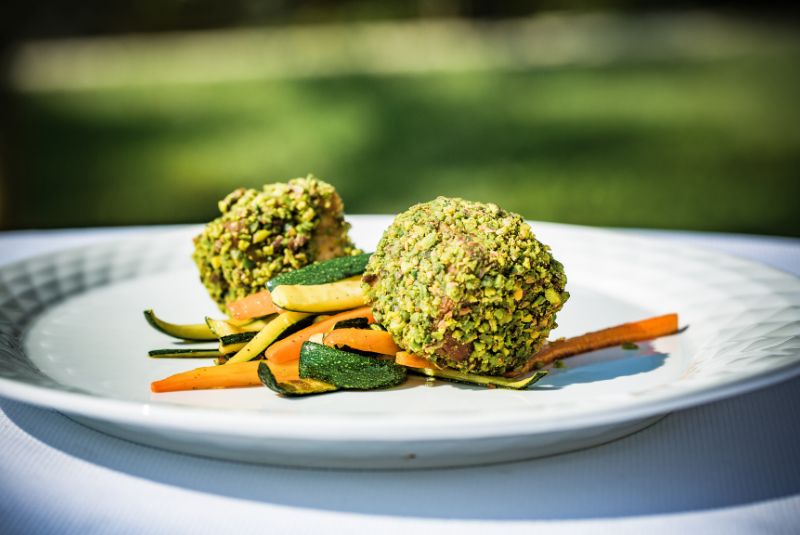
(Image: Ivo Biočina, courtesy of Croatian National Tourism Board)
The Istrian peninsula is home to some of the country’s finest cuisine, not to mention some of its best wines, and superb olive oil. Venetian influences have imbued its culinary repertoire with mouthwatering pasta dishes, and its forested hills hold a bounty of truffles. In particular, northwest Istria has a phenomenal concentration of vineyards and restaurants, at the meeting of four different terroirs, making for one of the greatest gastro enclaves anywhere in Croatia.
“It’s not easy to describe Istrian cuisine in a few words, because it is very rich in traditions, nuances and influences,” says Teo Fernetich, chef and owner of the San Rocco hotel and restaurant in Brtonigla. “At heart though it’s a simple cuisine, based first and foremost on the absolute excellence of the raw materials of which this area is very rich – meat, fish, game, vegetables, truffles, aromatic herbs and perhaps most of all, the best extra virgin olive oil in the world.” In 2005, Istria’s Al Torcio became the first Croatian olive oil to be listed in the prestigious Flos Olei – and since then, Istria has never looked back, with small olive mills such as Al Torcio, OleaBB and Mate consistently producing some of the world’s most highly rated olive oils.
Where to eat: San Rocco, Restaurant Badi, Konoba Malo Selo, Konoba Buščina
Where to stay: San Rocco, Grand Park Hotel Rovinj
Kvarner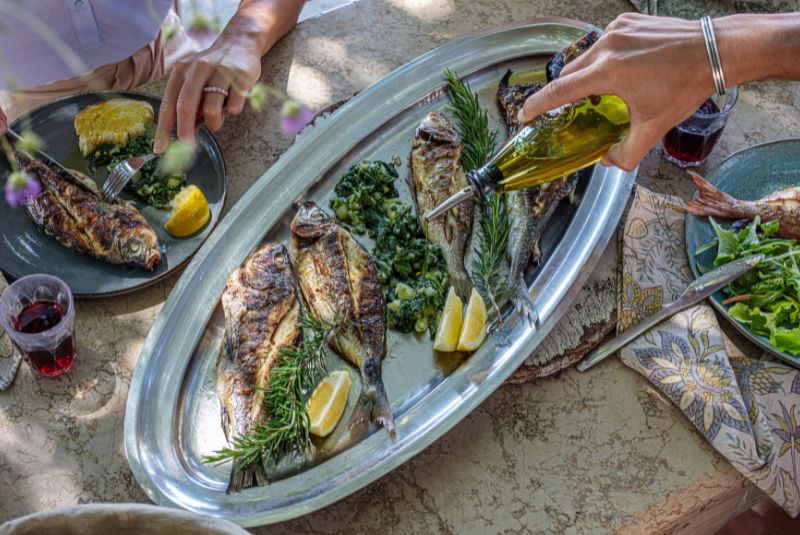
(Image: Maja Danica Pečanić, courtesy of Croatian National Tourism Board)
Wrapped around the head of the Adriatic like an embrace, the Kvarner region encompasses an exquisite coastline below the steep-sided, forested slopes of the Učka and Ćićarija mountains. Tea Vunić and Stiven Vunić are the owners and chefs at Konoba Zijavica, in the village of Mošćenička Draga. “Imagine the abundance and variety of food that our region offers,” the pair say. “Far from large industrial plants, the food here is of exceptional quality. It’s a shame to visit Kvarner without trying Kvarner shrimp, exceptional blue fish, asparagus, cherries, and the wonderful cheeses from small producers on the slopes of Učka. Over the years, we have developed a trusted network of food suppliers who produce fruits and vegetables without pesticides and chemicals. Our fishermen call us directly from the sea in the dead of night or early morning to inform us of their catch.”
As to what makes Kvarner and Croatia’s other culinary regions so authentic, Tea and Stiven have the final word. “Authenticity is key when designing a dish, often drawing inspiration from old, somewhat forgotten regional recipes. We don't aim to offer what you can eat in Italy, Spain, or Greece, although these countries share the Mediterranean culinary tradition. Each is unique, and we maintain our uniqueness by highlighting the food and the people who produce and prepare it.”
Where to eat: Konoba Zijavica, Navis, Plavi Podrum
Where to stay: Hotel Navis, Hilton Rijeka Costabella
Central Croatia
(Image: Julien Duval, courtesy of Croatian National Tourism Board)
Central Croatia is a place of gentle hills and forests, low mountains and wetlands with an abundance of produce including mushrooms and wild garlic, berries, freshwater fish and plenty of game. Bernard Korak is the chef and owner of Korak, a restaurant and winery set among the rolling hills and vineyards of Plešivica – a wine region known in particular for its sparkling wines. Korak works on a farm to table premise – many of the ingredients come from their own organic farm, others from a close network of local suppliers, and only in season. “Samoborsko gorje and Žumberak Nature Park are true gems of central Croatia, where mountains seamlessly blend with forests, pastures, and wetlands. This region is a rich tapestry of wildlife, herbs and mushrooms. Despite being one of the more sparsely populated and isolated areas, it lies surprisingly close to the capital city. The local cuisine, shaped by self-sustainability rather than Austro-Hungarian influences, mirrors the natural bounty of its surroundings. We at Korak restaurant and winery draw profound inspiration from this heritage, striving to honour our traditions while exploring innovative ways to utilise this abundant wealth.”
Where to eat: Korak Winery and Restaurant, Vuglec Breg
Where to stay: Vuglec Breg
Lika – Karlovac 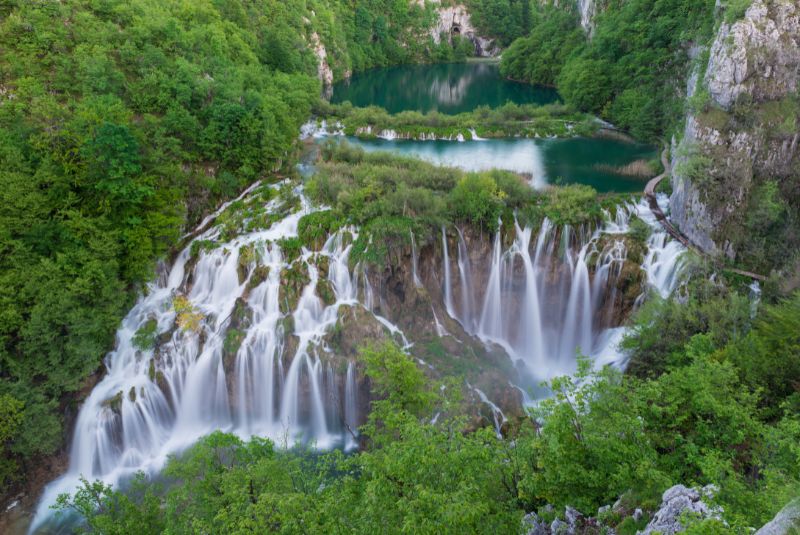
(Image: Luka Esenko, courtesy of Croatian National Tourism Board)
In the Croatian hinterland, behind the spectacular Velebit mountains, lies Lika, a region famous for one of Croatia’s genuine natural wonders, the Unesco-listed Plitvice Lakes National Park. Lamb features prominently in the cuisine of the region – it’s a staple of the local cuisine, prized for its unique flavour that reflects the region's natural environment. Other dishes typical of Lika include pork simmered with pickled cabbage, trout from the River Gacka and škripavac – a distinctive local cheese made with cow’s milk, at its best when it’s quite young. It makes a squeaky sound as you eat it, a bit like halloumi. On the coastal part of the region, you can savor traditional dishes cooked ispod peke, or ‘under the bell’ – a method where meat, often lamb or octopus, along with vegetables, are placed under an iron lid, surrounded by hot coals, and slow-roasted until the meat becomes exquisitely tender.
Where to eat: Lička kuća
Where to stay: Lyra
Slavonia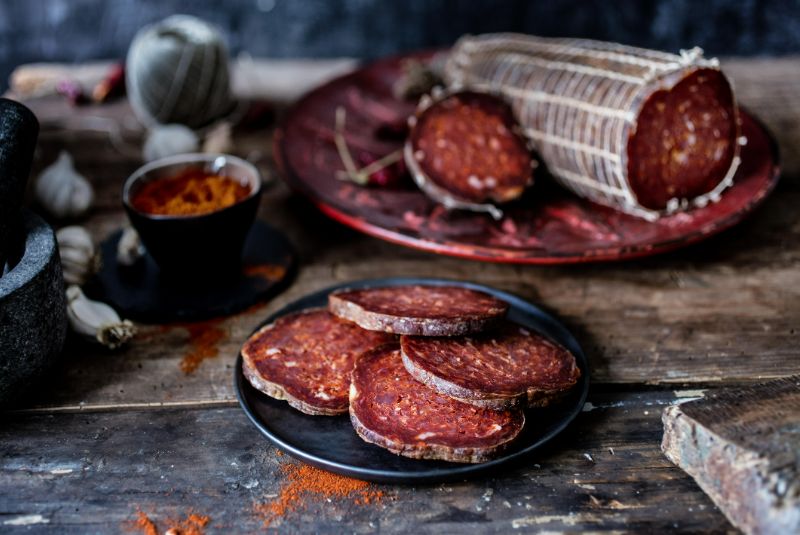
(Image: Maja Danica Pečanić, courtesy of Croatian National Tourism Board)
Enclosed on three sides by major rivers – the Drava, the Danube and the Sava – the cuisine of Slavonia is a far cry from that of the Adriatic, but no less delicious. Rich, spicy stews from its abundant freshwater fish are among the highlights here, including fiš paprikaš made with carp and lashings of paprika pepper, and perkelt od soma which is prepared with pike-perch. Kulen is to Slavonia what pršut (prosciutto) is to the Adriatic – a type of cured, spicy pork sausage with paprika and garlic. In common with the coast however, Slavonia has a long tradition of wine making stretching back to the Romans. A tip from award-winning sommelier Daniela Kramarić, who is also the owner of Plavi Podrum in Volosko, is not to miss trying the dessert wines of Slavonia and Baranja, including ice wine. Head to Ilok for some of the best wines the region has to offer.
Where to eat: Dunav
Where to stay: Waldinger
Discover more fantastic hotels, restaurants and bars with 50 Best Discovery, and start planning your next adventure.
